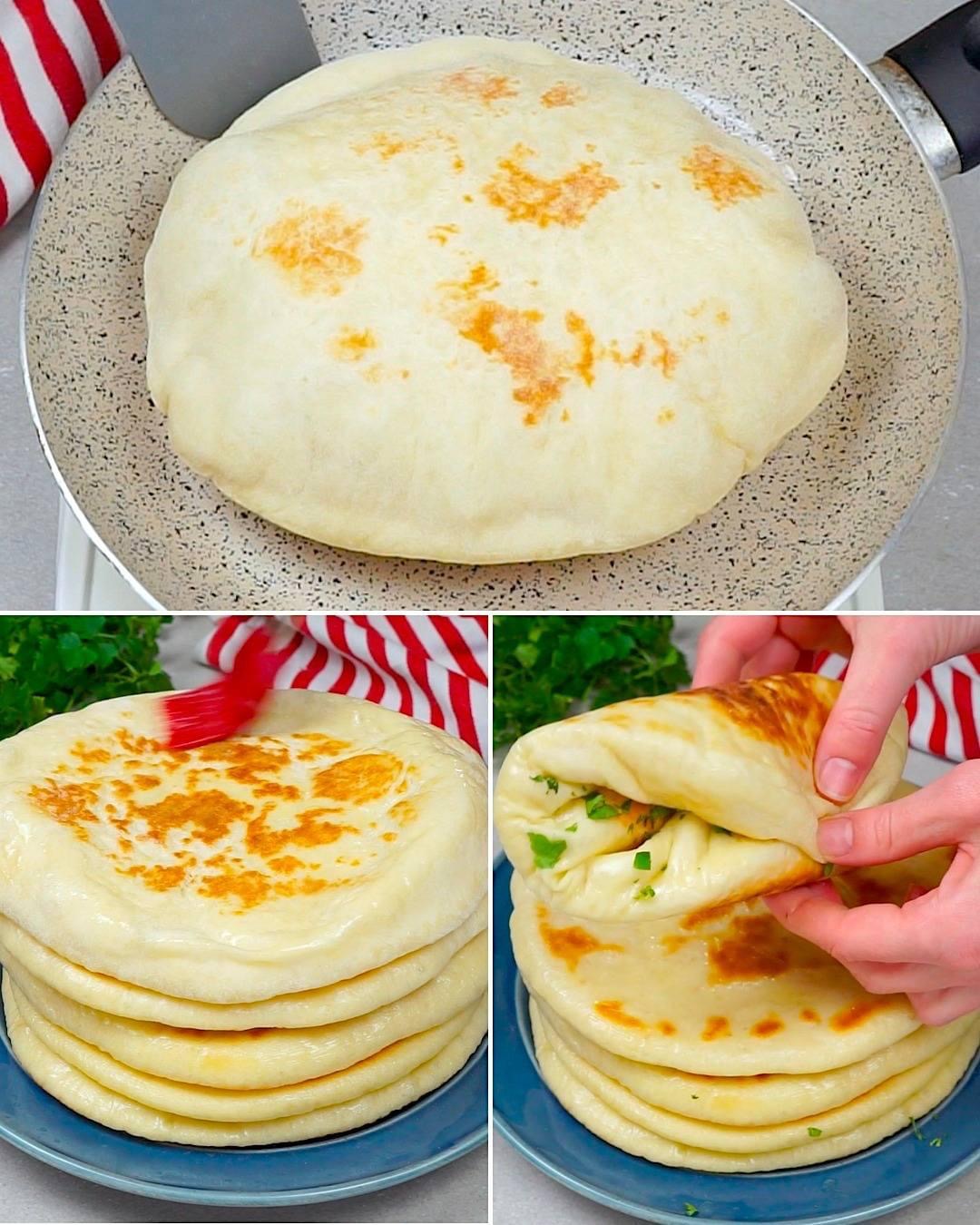Authentic Turkish-Style Bread Recipe
Introduction
Turkish bread, also known as “Pide” or “Ekmek,” is a delicious and versatile bread that holds a special place in Turkish cuisine. Its soft, airy interior and slightly crisp crust make it perfect for dipping into hummus, wrapping around kebabs, or enjoying with a variety of toppings. Making Turkish bread at home is a rewarding experience, as you can enjoy it fresh out of the oven with its delightful aroma filling your kitchen. This recipe will guide you through creating this traditional bread step by step.
Ingredients
- 4 cups all-purpose flour
- 2 teaspoons salt
- 1 teaspoon sugar
- 1 packet (2 1/4 teaspoons) active dry yeast
- 1 1/4 cups warm water (110°F/45°C)
- 1/4 cup olive oil
- 1/2 cup plain yogurt
- 1 large egg
- Sesame seeds (optional)
- Nigella seeds (optional)
Instructions
Preparing the Dough
- Activate the Yeast: In a small bowl, combine the warm water, sugar, and active dry yeast. Stir gently and let it sit for about 10 minutes until it becomes frothy.
- Mix the Dry Ingredients: In a large mixing bowl, combine the flour and salt. Create a well in the center of the flour mixture.
- Combine Wet Ingredients: In a separate bowl, whisk together the olive oil, yogurt, and egg. Pour this mixture into the well of the dry ingredients, followed by the activated yeast mixture.
- Knead the Dough: Mix the ingredients together until a dough forms. Transfer the dough to a floured surface and knead for about 10 minutes until it becomes smooth and elastic. If the dough is too sticky, add a little more flour, a tablespoon at a time.
- First Rise: Place the dough in a lightly oiled bowl, cover it with a damp cloth or plastic wrap, and let it rise in a warm place for about 1 to 1.5 hours, or until it has doubled in size.
Shaping and Baking the Bread
- Preheat the Oven: Preheat your oven to 475°F (245°C). Place a baking stone or an inverted baking sheet in the oven to heat up.
- Divide and Shape the Dough: Punch down the risen dough and transfer it to a floured surface. Divide the dough into two equal parts. Shape each portion into a ball and then flatten it into an oval or round shape, about 1/2 inch thick.
- Second Rise: Place the shaped dough on parchment paper or a floured baking sheet. Cover with a damp cloth and let them rise for another 20-30 minutes.
- Create the Traditional Pattern: Using your fingers, press deep indentations in the dough to create a criss-cross pattern. This is a signature look of Turkish bread. Optionally, you can sprinkle sesame seeds or nigella seeds on top for added flavor and texture.
- Bake the Bread: Carefully transfer the dough to the preheated baking stone or inverted baking sheet in the oven. Bake for about 15-20 minutes, or until the bread is golden brown and sounds hollow when tapped on the bottom.
- Cool and Serve: Remove the bread from the oven and let it cool on a wire rack. Slice and serve warm or at room temperature.
Tips
- Flour: For a more authentic texture, you can use a mixture of all-purpose and bread flour.
- Yeast Activation: Ensure your water is not too hot when activating the yeast, as high temperatures can kill the yeast.
- Rise Time: Be patient with the rising times; a well-risen dough is key to achieving the soft and airy texture of Turkish bread.
- Oven Setup: If you don’t have a baking stone, an inverted baking sheet can mimic the effect by providing a hot surface for the bread to bake on.
- Storage: Store leftover bread in an airtight container at room temperature for up to 2 days, or freeze for longer storage.
FAQs
1. Can I make this bread without yogurt?
- Yes, you can substitute yogurt with an equal amount of buttermilk or a mixture of milk and a teaspoon of lemon juice or vinegar.
2. What can I serve with Turkish bread?
- Turkish bread pairs well with a variety of dishes, including hummus, baba ghanoush, kebabs, soups, and salads.
3. How do I keep the bread soft?
- To keep the bread soft, wrap it in a clean kitchen towel after it cools. This helps retain moisture.
4. Can I add herbs or spices to the dough?
- Absolutely! You can knead in fresh herbs like rosemary or thyme, or spices such as cumin or paprika for extra flavor.
5. Is it possible to make this bread gluten-free?
- Making gluten-free Turkish bread would require a specific gluten-free flour blend and adjustments to the recipe. Look for gluten-free bread recipes designed to achieve similar results.
Enjoy making and sharing this delicious Turkish-Style Bread with family and friends. Its delightful texture and flavor make it a fantastic addition to any meal. Happy baking!

